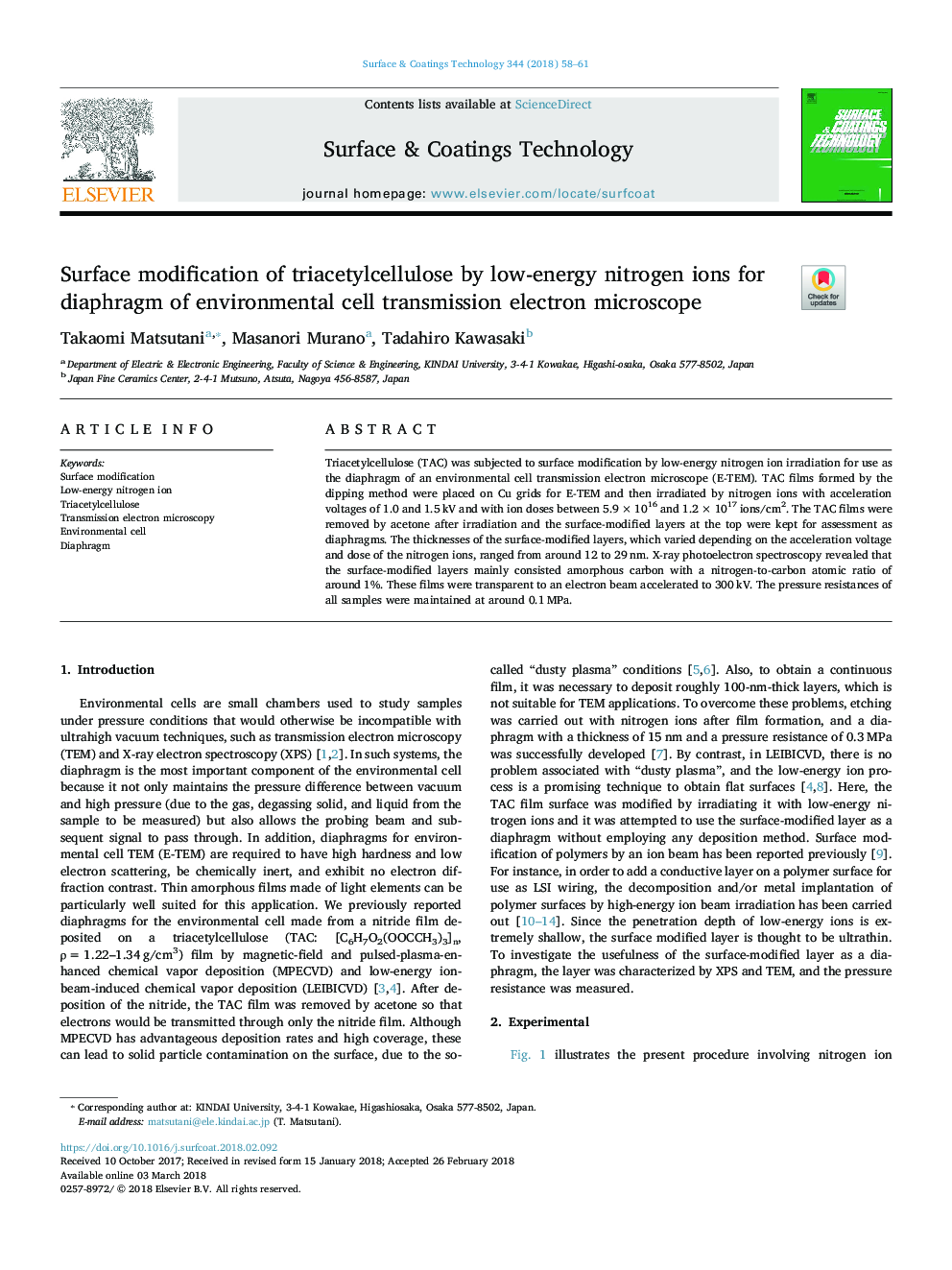| Article ID | Journal | Published Year | Pages | File Type |
|---|---|---|---|---|
| 8023713 | Surface and Coatings Technology | 2018 | 4 Pages |
Abstract
Triacetylcellulose (TAC) was subjected to surface modification by low-energy nitrogen ion irradiation for use as the diaphragm of an environmental cell transmission electron microscope (E-TEM). TAC films formed by the dipping method were placed on Cu grids for E-TEM and then irradiated by nitrogen ions with acceleration voltages of 1.0 and 1.5â¯kV and with ion doses between 5.9â¯Ãâ¯1016 and 1.2â¯Ãâ¯1017â¯ions/cm2. The TAC films were removed by acetone after irradiation and the surface-modified layers at the top were kept for assessment as diaphragms. The thicknesses of the surface-modified layers, which varied depending on the acceleration voltage and dose of the nitrogen ions, ranged from around 12 to 29â¯nm. X-ray photoelectron spectroscopy revealed that the surface-modified layers mainly consisted amorphous carbon with a nitrogen-toâcarbon atomic ratio of around 1%. These films were transparent to an electron beam accelerated to 300â¯kV. The pressure resistances of all samples were maintained at around 0.1â¯MPa.
Keywords
Related Topics
Physical Sciences and Engineering
Materials Science
Nanotechnology
Authors
Takaomi Matsutani, Masanori Murano, Tadahiro Kawasaki,
